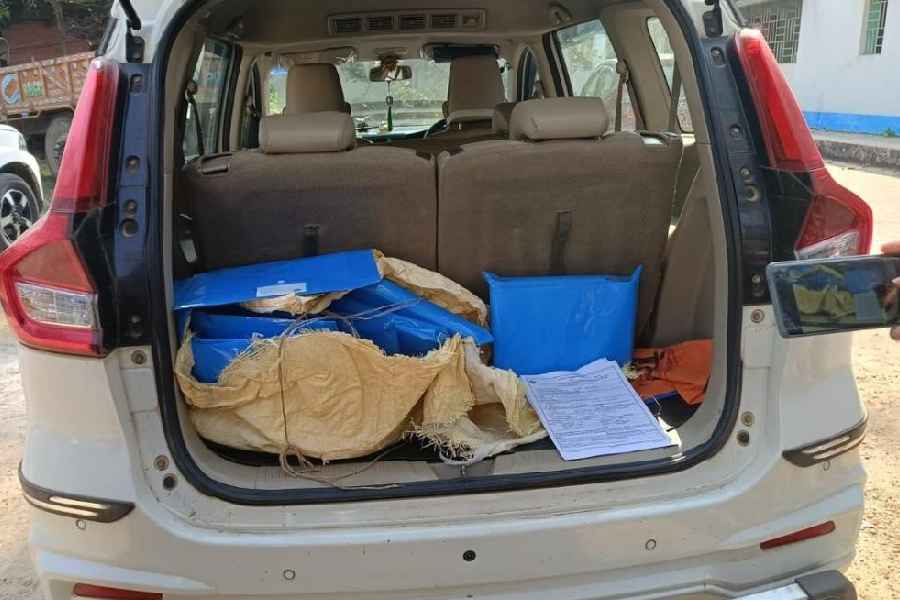
New Delhi, July 16: Air and dust pollution from road traffic may be a threat to Kashmir's silk sector, already dogged by the lack of cocoon-processing infrastructure, declining production and farmers' abandonment of silkworm-rearing.
Scientists at the University of Kashmir, Srinagar, and the Central Sericulture Research Institute, Pampore, have warned that traffic pollution may significantly reduce food consumption by silkworms and their capacity to spin the fibre.
Field observations suggest that silkworms do not feed well on mulberry leaves contaminated with road dust, among other pollutants. This low food consumption reduces the weight of the mature larvae, which decreases the productivity of silkworms.
"Pollution (from automobile exhaust and road dust) is a serious but largely unrecognised threat to sericulture," Ruqueya Nazir, a microbiologist and assistant professor at the environmental sciences department at the University of Kashmir, told The Telegraph .
Nazir and her colleagues from the Pampore institute have voiced their concerns in a report accepted by the journal Current Science, published by the Indian Academy of Sciences.
Jammu and Kashmir has long been a source of bivoltine silk, a high-quality fibre best produced in temperate climates. Bivoltine silk's strength and shine makes it comparable to Chinese silk, some sericulture scientists say.
But they cite how the number of silk-rearing households in the state has dropped to an estimated 400 from over 2,000 three decades ago, while annual cocoon production has fallen from 15 lakh kilos in 1960 to 8.32 lakh kilos in 2009 to 1.3 lakh kilos last year.
Irfan Ilahi, a scientist at the Pampore institute, and his collaborators from Jiwaji University, Gwalior, were among the first to document the adverse impacts of dust-contaminated mulberry leaves on silkworms' food intake over three years ago.
They found that reduced ingestion of leafy material by silkworms, as anticipated, led to a reduction in the digested food. Their observations also suggest that polluted mulberry leaves affect the metabolic activity of silkworms, reducing their efficiency to derive the maximum gain from the ingested leaves.
The researchers say that heavy road traffic, particularly along National Highway 1A that connects Kashmir to Jammu and the rest of India, may be contributing to dust pollution in the Valley. The mulberry leaf is known to attract and absorb dust, the Pampore scientists said.
"Pollution hadn't really been seen as a threat to sericulture thus far," said Satya Prakash Sharma, director of the Pampore institute.
He said the state's sericulture sector had focused on other concerns such as lack of infrastructure and marketing channels for silkworm farmers. Jammu and Kashmir lacks cocoon-processing infrastructure such as refining, spinning and weaving.
"We get traders from Bengal and other places who come and buy cocoons from the farmers for processing in other states. The farmers here don't get as much remuneration as they could," Sharma said.
Nazir and her colleagues have recommended "resurrective measures", including the planting of mulberry plants in fields away from roads, avoiding the rearing of silkworms on polluted mulberry leaves, and making farmers aware of the adverse effects of pollution on silkworm activity.










